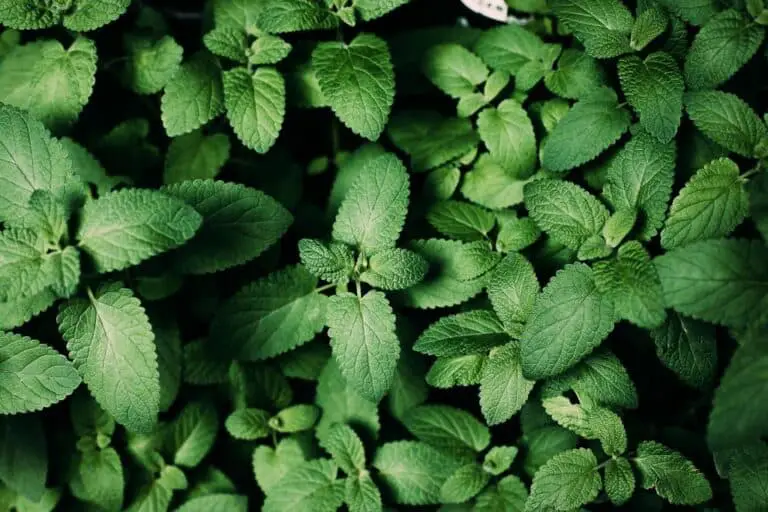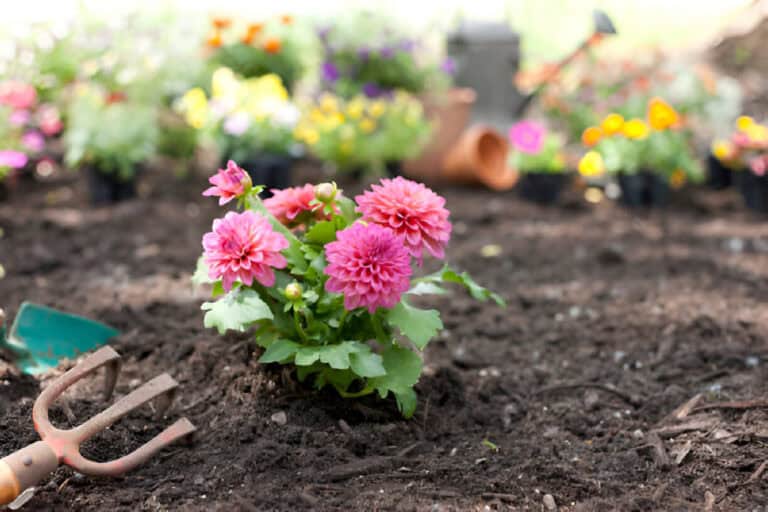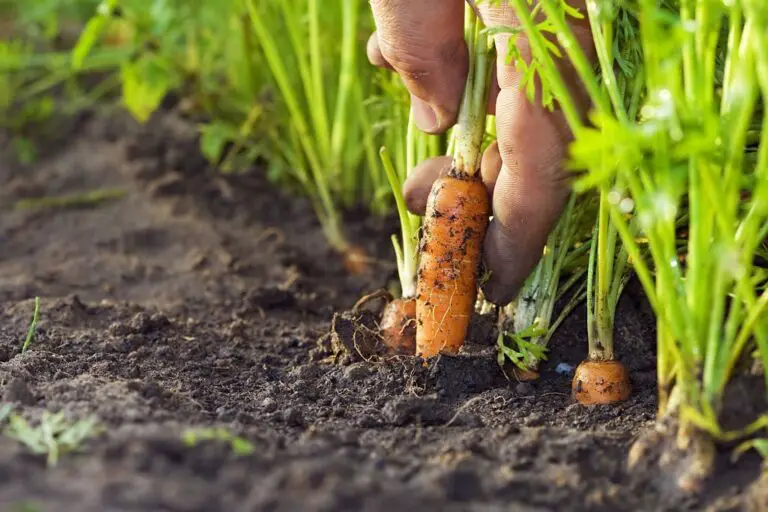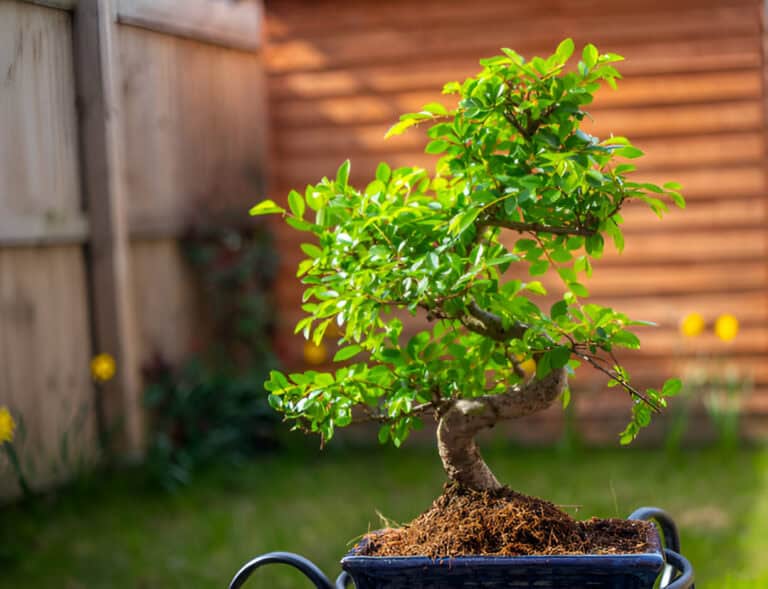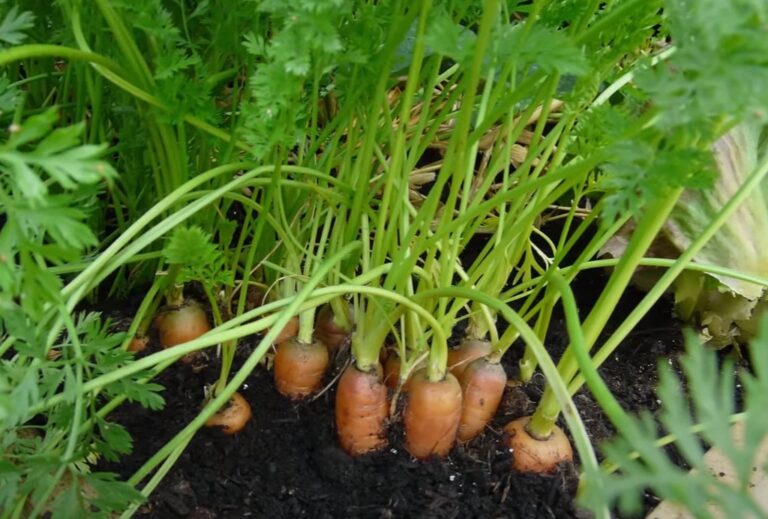Brussel Sprouts Leaves Wilting or Drooping: Why and How to Fix Them
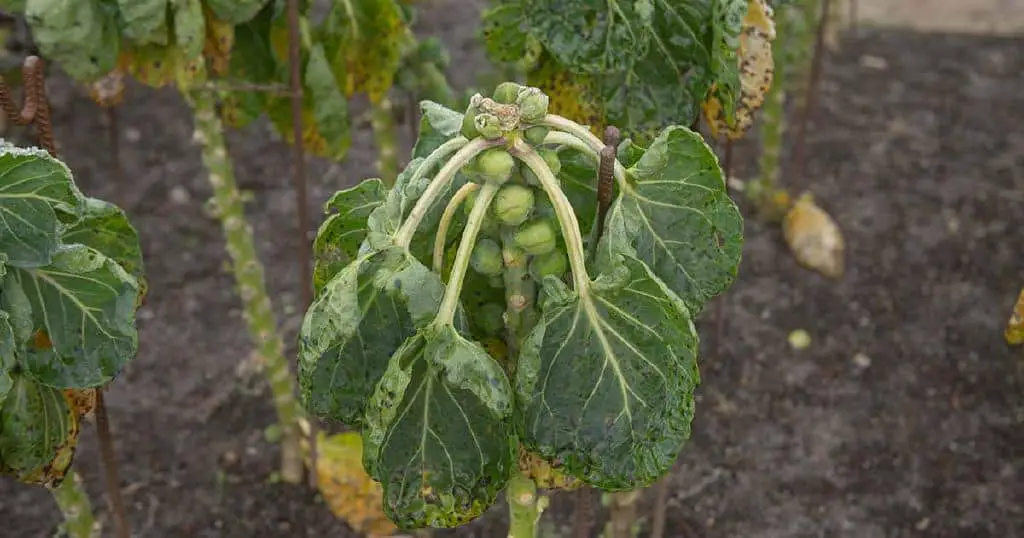
Are your Brussels sprouts plants looking a little under the weather? Are the once vibrant and luscious leaves now wilting or drooping, leaving you puzzled and concerned? Don’t panic! You’re not alone in this gardening conundrum.
Wilting or drooping leaves on Brussels sprouts plants can be a frustrating sight for any gardener. But fear not, because we’re here to shed light on the reasons behind this issue and provide you with practical solutions to revive your beloved green beauties.
In this article, we’ll delve into the world of Brussels sprouts and explore the possible causes of wilting or drooping leaves. From watering woes and nutrient deficiencies to pest invasions and environmental stressors, we’ll uncover the culprits that may be sabotaging your plants’ vitality. But that’s not all! We’ll also arm you with a toolbox of remedies and expert tips to nurse your Brussels sprouts back to their former glory.
So, grab your gardening gloves and let’s embark on a journey to rescue your Brussels sprouts from their leafy plight!
Recognizing the Signs and Symptoms of Wilting or Drooping Leaves in Brussels Sprouts
Brussels sprouts are a delightful addition to any vegetable garden or dinner plate. However, seeing their leaves wilting or drooping can be disheartening.
To effectively address the issue, it’s essential to recognize the signs and symptoms of wilting or drooping leaves in Brussels sprouts. Here are some common indicators to look out for:
- Wilted and limp leaves: Healthy Brussels sprouts leaves should be firm and turgid. If they appear wilted, droopy, or lack rigidity, it suggests a problem.
- Yellowing or browning of leaves: Discoloration, such as yellowing or browning, can indicate nutrient deficiencies, pest damage, or diseases affecting the plant.
- Leaf curling or distortion: Leaves that curl inward or display unusual shape distortions may signal environmental stress, pests, or diseases.
- Stunted growth or lack of new leaf development: If your Brussels sprouts plants are not growing as expected and fail to produce new leaves, it could be a sign of underlying issues.
- Presence of pests or fungal infections on leaves: Inspect the leaves carefully for any signs of pests, such as aphids or caterpillars, or fungal infections like powdery mildew. These can cause wilting or drooping.
Why Are Brussels Sprouts Leaves Wilting or Drooping?
There are several factors that can cause Brussels sprouts leaves to wilt or droop. Understanding these factors will help you identify the underlying issue and take appropriate action. Here are some possible reasons for the wilting or drooping leaves:
- Watering Issues: Overwatering or underwatering can both lead to wilting or drooping leaves. Brussels sprouts plants require a consistent and adequate water supply. If the soil is too dry, the leaves will wilt. On the other hand, if the soil is waterlogged, the roots may suffocate, leading to drooping leaves.
- Nutrient Deficiencies: Brussels sprouts are heavy feeders and require a well-balanced supply of nutrients. If the soil lacks essential nutrients such as nitrogen, phosphorus, or potassium, the plants may not receive the nourishment they need, resulting in wilted or drooping leaves.
- Pest Infestation: Insects and pests can cause damage to Brussels sprouts plants, leading to wilting leaves. Common culprits include aphids, cabbage worms, and flea beetles. These pests feed on the leaves, causing them to wilt and droop.
- Disease: Brussels sprouts plants are susceptible to certain diseases, such as clubroot and black rot. These diseases attack the roots and foliage, causing the leaves to wilt or droop. Proper disease prevention measures are crucial to maintaining healthy plants.
- Environmental Stress: Extreme heat, cold, or fluctuations in temperature can stress Brussels sprouts plants, leading to wilting leaves. Excessive sun exposure or frosty conditions can take a toll on the plants, causing the leaves to droop.
Read: Are There Male and Female Brussel Sprouts? Self Pollinating?
How to Fix Wilting or Drooping Brussels Sprouts Leaves
Now that we’ve identified the possible causes of wilting or drooping leaves, let’s explore some solutions to fix this issue and revive your Brussels sprouts plants:
1. Watering Tips:
- Ensure your Brussels sprouts plants receive consistent moisture by watering them deeply and regularly.
- Check the soil moisture level before watering. Stick your finger about an inch into the soil. If it feels dry, it’s time to water it. If it’s still moist, hold off on watering.
- Provide a well-draining soil to prevent waterlogged conditions that can suffocate the roots.
- Consider using mulch around the plants to retain moisture and regulate soil temperature.
2. Nutrient Management:
- Test your soil to determine if any nutrient deficiencies exist. Based on the results, amend the soil with organic matter or appropriate fertilizers to replenish the nutrients.
- Apply a balanced fertilizer specifically formulated for vegetables to provide essential nutrients.
- Consider using organic compost or well-rotted manure as a natural source of nutrients.
- Follow the recommended application rates to avoid over-fertilization, which can lead to other issues.
3. Pest Control:
- Inspect your Brussels sprouts plants regularly for signs of pests. Look for chewed leaves, insect eggs, or the presence of pests themselves.
- Handpick larger pests like cabbage worms or use organic pest control methods such as neem oil, insecticidal soap, or biological controls like beneficial insects.
- For severe infestations, consider using organic pesticides as a last resort. Follow the instructions carefully and apply them sparingly to minimize any potential harm to beneficial insects.
4. Disease Prevention:
- Practice crop rotation to prevent the buildup of soil-borne diseases. Avoid planting Brussels sprouts in the same spot year after year.
- Choose disease-resistant varieties when possible.
- Keep the garden clean and remove any plant debris that may harbor diseases.
- Maintain proper spacing between plants to improve air circulation and reduce the risk of fungal diseases.
5. Environmental Considerations:
- Provide shade or use shade cloth during hot summer days to protect the plants from excessive heat.
- Use row covers or cloches to protect young Brussels sprouts from cold temperatures and frost.
- Consider planting Brussels sprouts during the appropriate season for your region to avoid extreme weather conditions.
Understanding the Role of Environmental Factors in Wilting or Drooping Leaves
Environmental factors play a crucial role in the health of Brussels sprouts leaves. Let’s explore their impact:
- Effects of high temperatures on Brussels sprouts: High temperatures can cause excessive transpiration, leading to water stress and wilting. Provide shade or use mulch to reduce soil temperature and mitigate heat stress.
- Effects of low temperatures on Brussels sprouts: Brussels sprouts are tolerant of cool temperatures, but freezing temperatures can damage the leaves and cause wilting. Consider covering the plants with row covers or cloths during frosty periods.
- Impact of humidity levels on leaf health: High humidity levels create favorable conditions for fungal diseases, which can cause leaf wilting. Ensure proper air circulation and avoid overhead watering to minimize moisture on the leaves.
- Wind exposure and its influence on leaf drooping: Strong winds can lead to excessive transpiration and water loss, resulting in drooping leaves. Erecting windbreaks or providing physical barriers can protect the plants from wind damage.
- Effects of excessive or inadequate sunlight on leaf condition: Insufficient sunlight can hinder photosynthesis and weaken the plants, leading to wilting. Ensure your Brussels sprouts receive adequate sunlight for healthy leaf development.
Understanding these environmental factors helps you create suitable conditions for your Brussels sprouts, reducing the risk of leaf wilting or drooping.
Identifying Common Pests and Diseases that Cause Wilting or Drooping Leaves
Pests and diseases can wreak havoc on Brussels sprouts, causing leaf wilting and compromising plant health. Here are some common culprits:
1. Aphids: These tiny insects feed on the sap of Brussels sprouts plants, causing leaves to curl, yellow, and eventually wilt. Regular inspection and prompt action can help control aphid infestations.
2. Cabbage Worms and Caterpillars: These pests chew on the leaves and end up causing Brussels sprouts leaves to have holes, leading to leaf wilting and damage. Look for caterpillar presence and employ natural control methods like handpicking or introducing beneficial insects.
3. Fungal Infections: Fungal diseases like powdery mildew and clubroot can affect Brussels sprouts, causing leaves to wilt, discolor, or develop spots on Brussels sprouts. Fungicides and proper sanitation practices can help manage these infections.
4. Bacterial Diseases: Bacterial infections such as black rot and bacterial leaf spot can result in leaf wilting, yellowing, and necrosis. Sanitation, crop rotation, and resistant cultivars are effective preventive measures.
5. Viral Infections: Viruses like mosaic virus and cauliflower mosaic virus can impact leaf health, leading to wilting, mottling, and distorted growth. Prevention through disease-free transplants and insect control is crucial.
How to Fix Wilting or Drooping Brussels Sprouts Leaves
Now that we’ve identified the possible causes of wilting or drooping leaves, let’s explore some solutions to fix this issue and revive your Brussels sprouts plants:
1. Watering Tips:
- Ensure your Brussels sprouts plants receive consistent moisture by watering them deeply and regularly.
- Check the soil moisture level before watering. Stick your finger about an inch into the soil. If it feels dry, it’s time to water. If it’s still moist, hold off on watering.
- Provide a well-draining soil to prevent waterlogged conditions that can suffocate the roots.
- Consider using mulch around the plants to retain moisture and regulate soil temperature.
2. Nutrient Management:
- Test your soil to determine if any nutrient deficiencies exist. Based on the results, amend the soil with organic matter or appropriate fertilizers to replenish the nutrients.
- Apply a balanced fertilizer specifically formulated for vegetables to provide essential nutrients.
- Consider using organic compost or well-rotted manure as a natural source of nutrients.
- Follow the recommended application rates to avoid over-fertilization, which can lead to other issues.
3. Pest Control:
- Inspect your Brussels sprouts plants regularly for signs of pests. Look for chewed leaves, insect eggs, or the presence of pests themselves.
- Handpick larger pests like cabbage worms or use organic pest control methods such as neem oil, insecticidal soap, or biological controls like beneficial insects.
- For severe infestations, consider using organic pesticides as a last resort. Follow the instructions carefully and apply them sparingly to minimize any potential harm to beneficial insects.
4. Disease Prevention:
- Practice crop rotation to prevent the buildup of soil-borne diseases. Avoid planting Brussels sprouts in the same spot year after year.
- Choose disease-resistant varieties when possible.
- Keep the garden clean and remove any plant debris that may harbor diseases.
- Maintain proper spacing between plants to improve air circulation and reduce the risk of fungal diseases.
5. Environmental Considerations:
- Provide shade or use shade cloth during hot summer days to protect the plants from excessive heat.
- Use row covers or cloches to protect young Brussels sprouts from cold temperatures and frost.
- Consider planting Brussels sprouts during the appropriate season for your region to avoid extreme weather conditions.
Long-Term Care and Maintenance for Healthy Brussels Sprouts Leaves
Maintaining healthy Brussels sprouts leaves requires consistent care throughout the growing season. Consider these practices:
1. Crop Rotation: Rotate the location of your Brussels sprouts crop each year to reduce the risk of pests and diseases. This practice helps break the life cycles of harmful organisms and improves overall plant health.
2. Pruning and Removing Damaged Leaves: Regularly inspect your plants and remove any damaged, diseased, or yellowing leaves. Pruning promotes airflow and reduces the spread of pests or diseases.
3. Implementing Proper Weed Control: Weeds compete with Brussels sprouts for nutrients and moisture. Employ mulching, hand-weeding, or organic weed control methods to keep weed growth in check.
4. Monitoring and Managing Pests and Diseases: Regularly monitor your plants for pests and signs of diseases. Introduce natural predators or use organic pest control methods to manage infestations. Promptly address any issues to prevent the spread of pests or diseases.
5. Providing Adequate Care Throughout the Growing Season: Provide your Brussels sprouts with proper care, including regular watering, fertilization, and monitoring. Attend to their needs throughout the growing season to ensure healthy
Conclusion
If you notice wilting or drooping leaves on your Brussels sprouts plants, it’s important to identify the underlying cause and take prompt action. By addressing watering issues, managing nutrient deficiencies, controlling pests, preventing diseases, and considering environmental factors, you can revive your plants and ensure their healthy growth.
Remember to maintain a regular watering schedule, provide adequate nutrients, monitor for pests and diseases, and create a favorable environment for your Brussels sprouts. With these proactive measures, you can enjoy a bountiful harvest of vibrant and delicious Brussels sprouts. Happy gardening!


